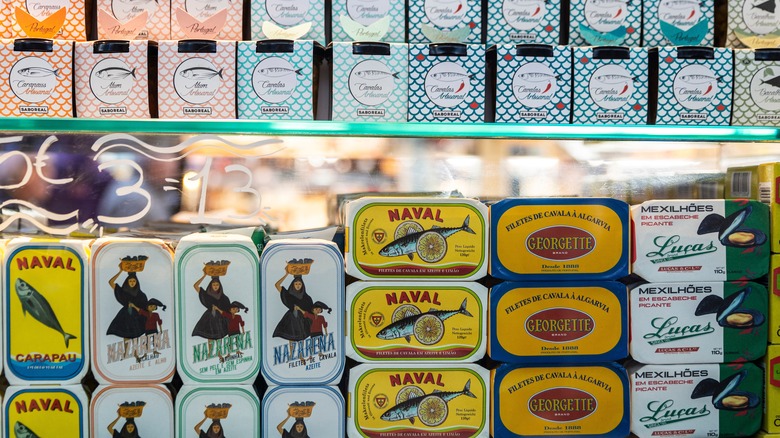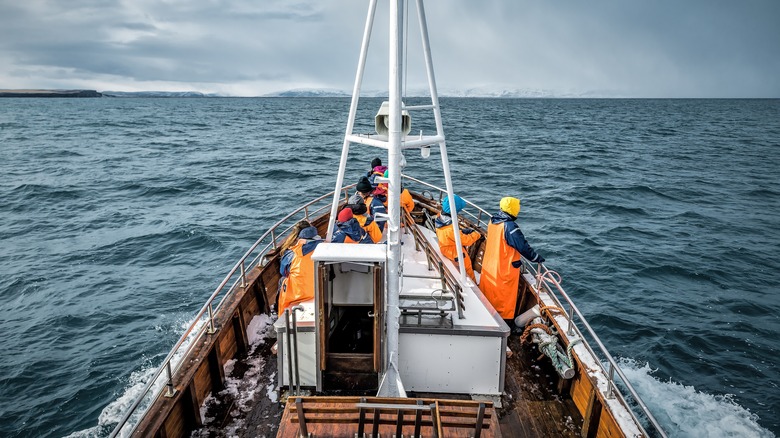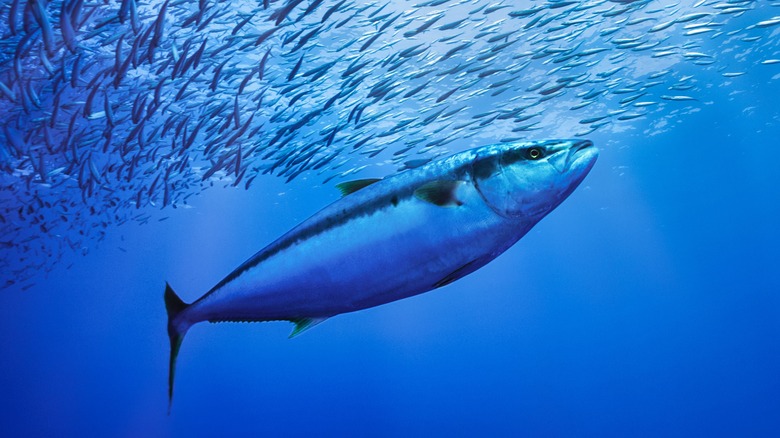What The Blue Fish Label On Canned Tuna Really Means
Depending on who you ask, shelf-stable fish is one of humanity's great achievements of the modern era. Originally developed as a way to preserve surplus fish for years to come, today canned fish is a creative landscape of countless seasonings and brines. In addition to interesting flavorings, fish quality and sustainability have become top of mind for modern consumers. Certifications and labels that help regulate the industry's environmental impact have increasingly become something shoppers keep an eye out for.
The eye-catching blue fish label on your stout can of tuna is a sustainable seafood certification created and issued by the MSC (Marine Stewardship Council). This means that a fishery has been audited for its environmental impact with a focus on overfishing. The rules against overfishing work because they only allow capturing species with a healthy stock and an eye on maintaining that population indefinitely. The certification also emphasizes minimizing the impact on the other marine inhabitants that may get caught up in poor fishing practices. Lastly, the fishery must have an effective management system that ensures it follows new laws and certification standards.
The certification process
The cost of the certification and the time it takes from start to official certification can depend on the size of the fishery, how organized its data is, and the level of participation of stakeholders. Rough estimates taken from the MSC certification guide state a cost estimate of $15,000 to $120,000 and a time estimate of 12 to 18 months. There are local grants that can help smaller fisheries with the cost of certification. It's important to note that fisheries don't pay the MSC directly, only an outside certification party that is licensed by MSC.
The process begins with an optional pre-assessment that will reveal any major issues that are present and give the fishery time to fix them before the real assessment starts. Once a fishery gets their ducks in order, it will receive a final score out of 100, where a score of 60 is the minimum for passing, an 80 puts them at the global standard, and a 100 is considered state of the art. A score between 60 and 79, though passing, will come with stipulations to improve operations during the five year certification life span.
What makes a tuna fishery sustainable?
The MSC works with scientists on an international scale to provide cutting-edge standards in fishery management so that companies and consumers can stay informed and make environmentally friendly choices. The standards are reviewed every few years to make sure they keep up with scientific research. For instance, a version published in July 2024 contained several important amendments for tuna fisheries.
Most tuna fisheries interact with sharks as part of normal operations, so there are very strict guidelines to prevent shark finning. Tuna are migratory fish and using FADs (Fish Aggregating Devices) can help lure them to one place. New guidelines have been set in place to reduce lost FADs which can unintentionally entangle other sea creatures. If fisheries using FADs doesn't sit well with you, look for FAD-free or pole-and-line caught on the label. Since tuna fisheries spend long stretches out at sea, they are notoriously difficult to monitor and, as of 2024, policies have been put in place to increase regional fisheries management organisations' abilities to check in on tuna fisheries.
This is just a small sample of all the requirements laid out in the MSC Fisheries Standards, which aims to protect an important food source and fragile ecological system. On top of all that, fisheries must reapply every five years and be subject to surveillance audits.
Getting the MSC's Sustainable Seafood Certification is not a trivial task and maintaining it keeps fisheries up to date on the latest scientific findings that support our marine ecosystems. If you see the blue fish label on a can of tuna in the grocery aisle you can be confident that the company is committed to the sustainability of our oceans.


